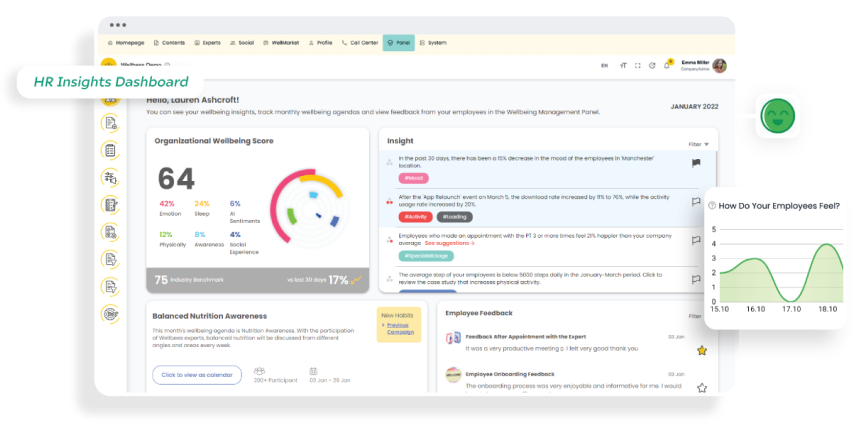Like most science and breakthrough models, our approach has been built on the shoulders of giants and giantesses. So, geek out with us for a second, okay?


We are utilizing Self-Determination Theory, a macro-theory of human motivation and development, as an evidence-based and cross-culturally validated approach to depict psychosocial experiences and well-being. According to Self Determination Theory (SDT), basic psychological needs include autonomy, competence, and relatedness, which are the nutrients of effective human functioning, constituting necessary conditions for the growth and wellness (Ryan & Deci, 2000).
SDT researchers' considerable effort to explore needs satisfaction in interpersonal contexts (e.g., workplace, gym, school, parenting, clinics and health care, leisure, friendships and romantic relationships) showed that autonomous motivation (instead of a controlled motivation), increased positive affect and enhanced psychological wellbeing (Deci & Ryan, 2008).
However, although work is the most dominant common domain of adult life, not all workplaces are designed equal in terms of Employee Experience (EX); as some might be highly engaged and fulfilling, and some others might find it a total disaster because of controlled reasons or lack of any reason.
Considering the possible meanings of work, it is not only a means to survive as a source of income but is itself important arena for self and collective realization, and personal satisfaction (Ryan & Deci, 2017)

As the field of psychology started moving from illness model to positive psychology model in the 1990s, wellness became a research topic in many areas of human life. Among those, positive Employee Experience (EX) is an increasingly targeted topic by companies to elevate human experience, motivation, and satisfaction at work. Also, with the pandemic creating a mental health crisis, there is also a rising demand from employees in terms of employment benefits such as wellness perks, employee assistance programs and self-care practices. However, the impact of those benefits is understudied via evidence-based research. This discrepancy between academia and industry is likely due to either lack of collaboration between labs and companies, or the companies’ limited research resources and staff outside of academia.
At Wellbees, we are working hard to address this gap. This is why our scientific approach is based on Self-Determination Theory which is an holistic approach for wellness, growth, and development, and has been validated for the last 50 years of research beyond the lab settings in every domain of life, from work life to parenting, from exercise to diet, from romantic relationships to intellectual development, from health behaviors to volunteering.

For this purpose, we have an answer for “why we do what we do”. Believing that wellbeing is not a luxury anymore but a necessity, this calls for a solid academic and scientific collaboration. By partnering with the Motivation and Wellbeing Lab of St John Fisher University at New York, we work together to analyze the impact of our corporate employee wellbeing platform and its psychological return on investment for our users by lending support from Self-Determination Theory.
By collaborating with psychology professors and their students, we are also piloting multiple projects where we aim to show
1) how to utilize psychology lab to conduct real-life research beyond the lab,
2) how to utilize psychology to create content and intervention strategies via an app/technology for empirical support,
3) how to be a role model of industry-academy collaboration for scientifically informed practices, and community engagement to better inform decision-makers and stakeholders so that more wellbeing concerns can be addressed at work.
In Wellbees, we are working joyfully to merge empirical industry work and evidence-based lab research based on SDT! It is such a meaningful goal for us to do so. Let’s dive deeper into SDT.

The quality of human experience of these three basic needs of autonomy, relatedness and competence are essential to people's wellbeing, in the same way that sun, soil, and water are nutrients essential to plants. Despite the functional role of need-fulfilling experiences for ongoing motivated, fulfilling and meaningful behavior, it might not always be the case as we might find different contexts as pressurizing, controlling, and frustrating. Such as work!
SDT points to the importance of human propensity towards growth and healthy development; leading intrinsic motivation for and feeling full of energy to achieve goals (Ryan & Deci, 2000). Therefore, as a metatheory of human experience, almost 50 years of SDT research shows that satisfaction versus frustration of these needs can be a protective factor for wellbeing as well as be a risk factor for illbeing respectively in various contexts.
Since the pros/cons of the workplace have a potential to impact beyond work, such as family, physical/mental health, spirituality, etc., employee wellbeing is becoming more of a demand from the workforce and an interest from companies thereof.
It is evident with numbers as well. The cost of ignoring workplace wellbeing to employers is up to £45 billion, whereas the investment in positive employee experiences and focus on their mental health, returns £5 for every £1 spent (Hampson & Jacob, 2020). However, what is less studied than the economical Return on Investment (ROI) is the psychological ROI for these perks from an evidence-based framework (Schneider et al., 2020). Therefore, our research projects within this scientific framework add to the body of knowledge regarding the extent to which and how these interventions can help employees by utilizing these science-based knowledge on our employee wellbeing platform.
Using SDT (Ryan & Deci, 2017) we are also able to understand how EX conditions facilitate or hinder human capacity for wellness and flourishing via human-computer interaction for psychological benefits. The findings can emphasize how technology can be beneficial in implementing supportive strategies and interventions for individuals and organizations as a whole. By targeting this intersection, our research team believes that we can pioneer further researchers to understand the broader utilization of psychology in emerging HR technologies.
Many social and psychological theories identify the immediate psychological antecedents of behavior, but neglect the origins of such antecedents. That is, there are many approaches telling us what the goal is, however the answer for “How do we get there?” is missing!

From an SDT perspective, our contents, experts, and interventions acknowledge that human beings are not mechanisms, but organisms who need supportive mechanisms. Employees are organisms with dynamic needs in order to flourish, and this cannot be done alone in a healthy ecosystem: social bonds are the catalyst for that desired intrinsic motivation and performance.
With respect to self-determination, because employees feel that their own actions are affecting others, and because they feel personally responsible for the choice to expend greater effort, persistence and social behaviour, they are likely to experience their actions as self-determined, which is intrinsically rewarding and pleasing to the self within social relationships (Ryan & Deci, 2017). This is what we aim at work: being sociable, capable and joyful individuals.
Therefore we need to focus on the process, not only on the outcome. This is why the way we design our user journeys, we posit that self is a process not a product. And, this is how SDT helps us to create mechanisms involved in motivational transfer from one context to another and the factors that assist in the development of autonomous motivation, vitaility, flourishing, and overall- wellbeing that applies to every level of life!
By using Vallerand’s (2007) hierarchical explanation of Self-Determination Theory, our app has different features that tap different levels. Below is a chart that explains what each level corresponds to, what it represents, and examples of how we tap each by borrowing related other evidence-based practices known in psychology literature.
| level | correspondence | representation | examples |
| Global Level | Your executive personality | Motivation at the global level represents generalized tendencies to be autonomously motivated and is expected to have an effect on behavioural engagement across a number of contexts as an overal personality and attitude towards life. | Our goal is to empower every individual to be at the driver’s seat of their own wellbeing journey by having an internal locus of control and autonomous functioning. This covers being autthentic (Kernis & Goldman, 20xx), self compassionate (Neff, 2002), and having a growth mindset (Dweck, 20yy), and learned hopefullness (Tomasulo, 2020) by using their own character strengths volitionally (VIA) to attain multiple positive psychology outcomes (PERMAV model). |
| Contextual Level | Your domain specific functioning | Motivation at the contextual level reflects reasons to participate in a variety of behaviours in a particular context. Contexts refer to behavioural categories encompassing a number of given behaviours or actions in specific settings, such as occupational (e.g., in the office) or extramural (e.g., at home, after work) contexts. | Addressing the 8 pillars of wellbeing (emotional, physical, environmental, financial, social, spiritual, intellectual, occupational/professional), we are providing experts, tools, and contents for each that facilitate competence development through the power of social bonds (Ryan & Deci, 2017). Brick by brick, seeding an ecosystem motivation (Crocker, 2010) where each employee paves the way for wellbeing mutually inclusive of everyone, without tying their self-worth contingent on mere results but rather enjoying the organizational progress together. |
| Specific Level | Your microsteps towards change | At the situational level, motivation is conceptualized as the impetus to engage in specific bouts of a given behaviour and, by definition, motivation at this level is highly specific is less likely to be transferred across behaviours or contexts. A key aspect of the model is that motivation at each level affects cognitive, emotional, and behavioural outcomes specific to that level. | We are designing interventions for each individual developed around evidence-based models inspired by the Tiny Habits Model by BJ Fogg, PhD and Founder of Stanford University's Behavior Design Lab. We apply this behavior change paradigm by adding SDT’s need supportiveness features to get the best results from our challenges, journeys, and all instructions around these contents as in the form of autonomous motivation for each desired outcome. |
The way we design the employee experience (EX) in our platform is inspired by the Self-Determination Theory which encourages a self-paced and sustainable journey. As you have heard hundred times so far, we are focusing on autonomy.
1
a need that we support that comes hand in hand with meaningful social connections and competence support.
2
a desired quality of motivation which makes the change sustainable and volitional.
3
a trait level individual difference, which explains the whole difference between ill-being and well-being at the end of the day.
When it comes to organizational change, our focus is not the mere individual. We bow at the altar of ecological change which prescribes multiple layers of interventions to change organizations because as you know very well, any meaningful change in a company takes a multi-pronged approach. Call it either an organizational healing or a healing organization. We are here for this!
Relying on SDT, we point the importance of human propensity towards growth, healthy development, and positive well being; leading intrinsic motivation for and feeling full of energy to achieve goals (Ryan & Deci, 2000). As an organismic macro theory of motivation, human behavior, and personality development, we have the concern, and passion of how social conditions facilitate or hinder human capacity for wellness and flourishing at above and beyond the workplace (Ryan & Deci, 2017).
Thus, our user journeys focus to facilitate this human capacity where science backs us!
Wellbees is an employee well-being platform. It works for a world where each employee reaches his/her potential and realizes himself/herself. It believes in holistic well-being for individuals to be well, and all the features in it are a step towards reaching the needs.
Wellbees not only identifies areas of improvement, but also supports the user in this process and presents the 'hows' in the best future way.

Wellbees helps employees meet 3 basic psychological needs to develop their potential: autonomy, relatedness and competence. When an employee can meet these 3 needs, s/he reaches job satisfaction and reaches fully functioning. It is believed that the need for a new job search will disappear for the employee who develops, grows and improves in every domain, because he/she can produce, shape, change and develop the job he/she desires in his/her workplace. With this goal, Wellbees also performs turnover analysis.
Wellbees has a variety of functions that seamlessly promote these needs and enable every employee to reach their potential. In addition to this, there are specific features that directly tap these needs and to support them

Autonomy support
written and media content, selection of programs and experts, market products.

Relatedness support
clubs, events, friend profile screens, challenges, duels.

Competence support
badges, programs, challenges, gamification function.